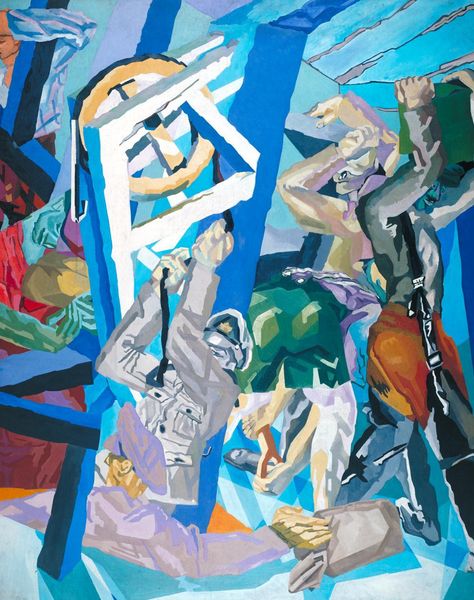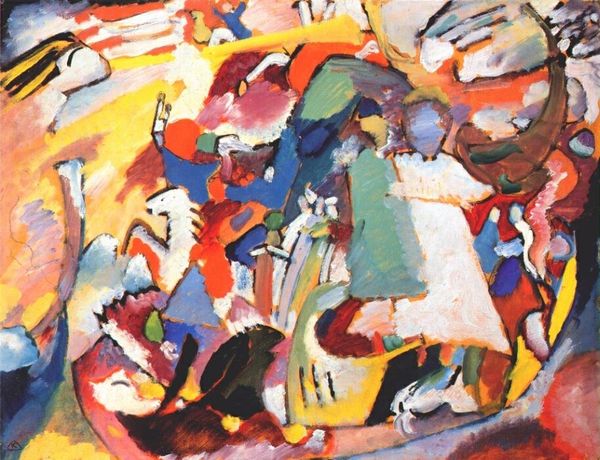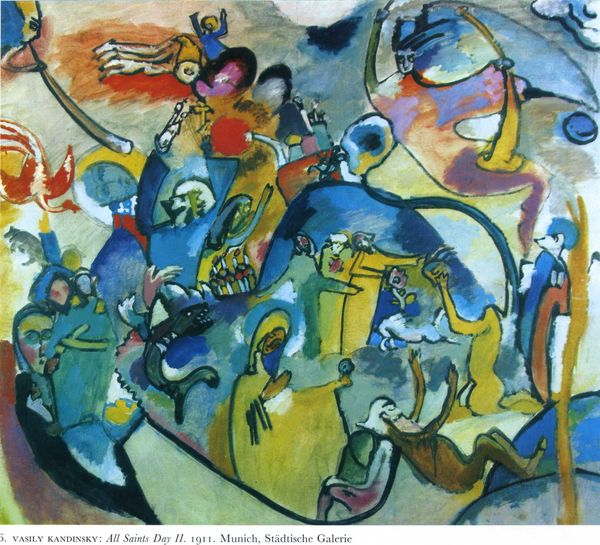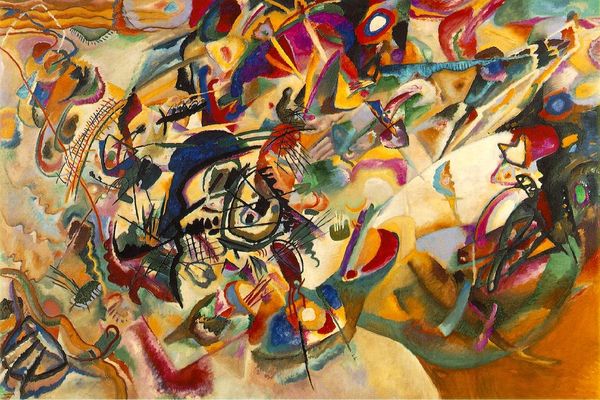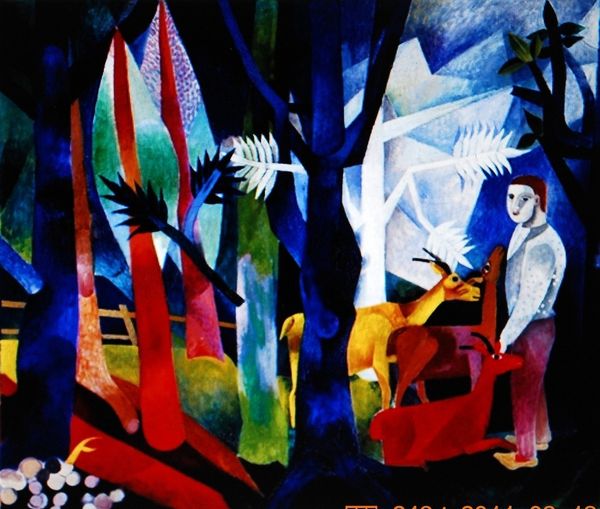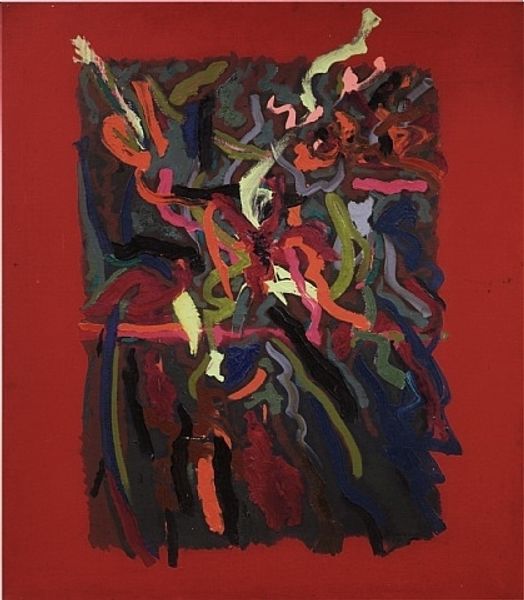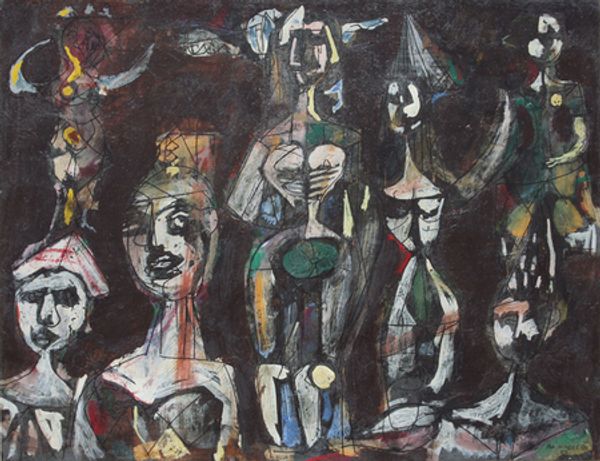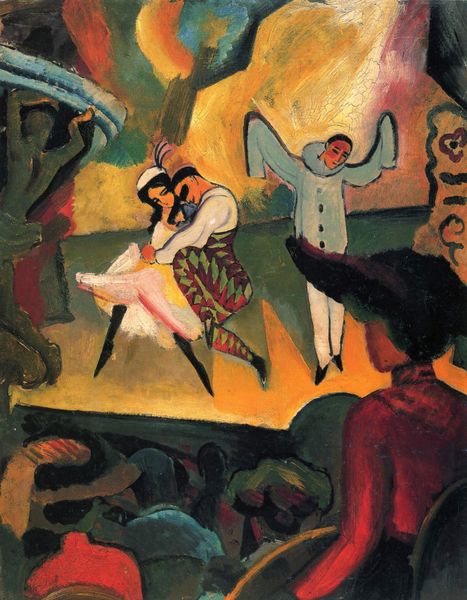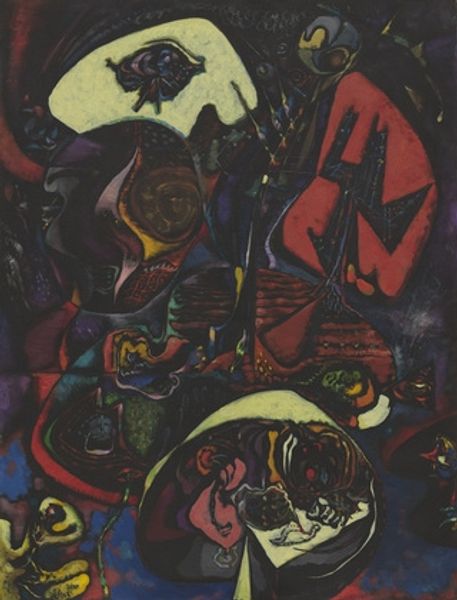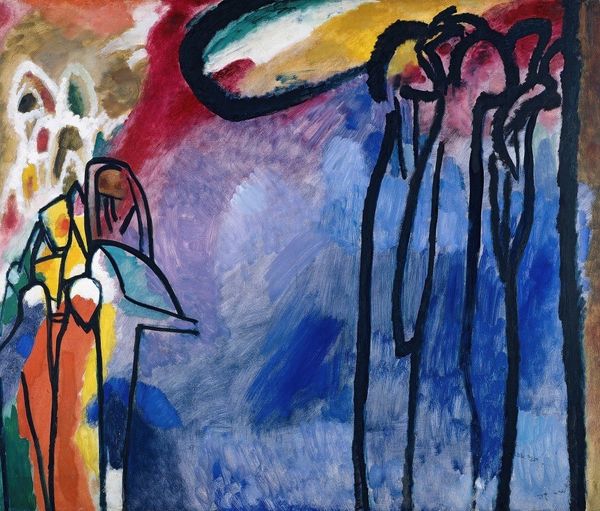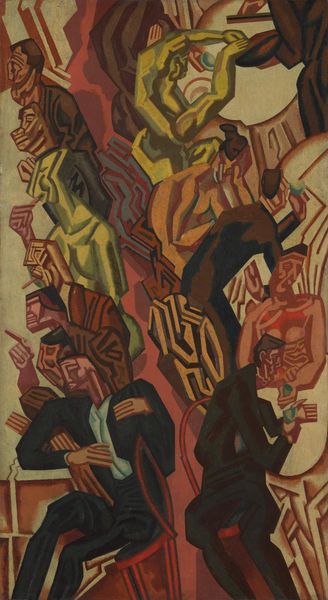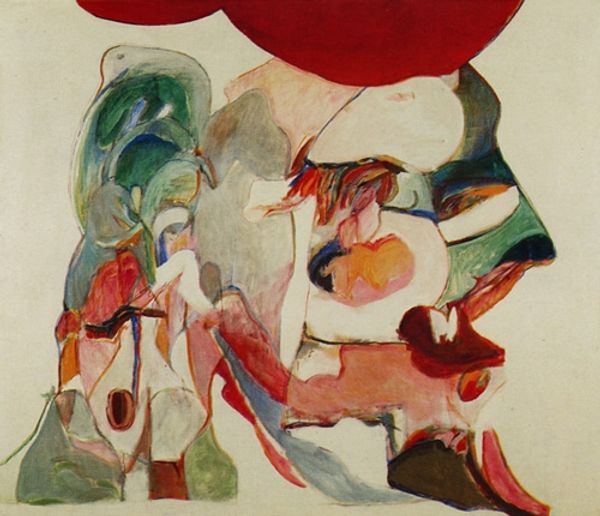
oil-paint
#
oil-paint
#
landscape
#
german-expressionism
#
figuration
#
oil painting
#
expressionism
Copyright: Public Domain: Artvee
Curator: Immediately, the chromatic disharmony gives me a sense of unease, almost sickness. A fascinating emotional landscape unfolds from the unsettling juxtaposition of hues and forms. Editor: Indeed. Let’s delve deeper. What we're observing is Heinrich Campendonk’s oil painting, "The Cloistered Life," painted in 1921. It embodies key characteristics of German Expressionism. Curator: Yes, expressionism is a useful term. The figures almost appear trapped in a dreamscape; the elongated features and unnatural skin tones scream distortion and alienation. Note how Campendonk renders archetypes as if from the depths of our collective fears or yearnings. Editor: Precisely! Contextually, Germany in 1921 was reeling from World War I, marked by economic instability and social unrest. Consider how such turmoil informed the art produced then—how might this painting act as a commentary on society? Notice, for example, the figures on either side seem partitioned or facing away. Are they turning away from society or towards something? Curator: I agree, I feel a spiritual yearning; the figures on both sides seem in deep contemplation, with a spiritual animal and geometric abstractions hovering in the space between them. Editor: The abstracted zigzag elements, as well as other shapes—do they act as barriers? Or pathways between those figures? How might we interpret the positioning of the figures? Consider too, what effect this flattened perspective and tilted picture plane may be designed to provoke. Curator: Good points, those details further add to a sense of unease but, more specifically, hint at emotional tension. Perhaps reflecting on psychological conflicts during that era in German culture, while simultaneously using those distorted colours and figures as symbols of the struggle? The tension is what invites contemplation, even today. Editor: Exactly! Campendonk offers no easy answers, which leaves viewers free to reflect and react—which remains its public role almost a century later! What do you make of the overall legacy of art like this in visual culture today? Curator: It reminds us of the continuous psychological and societal tension humanity is constantly challenged to overcome! Its visual language lingers in our culture.
Comments
No comments
Be the first to comment and join the conversation on the ultimate creative platform.
